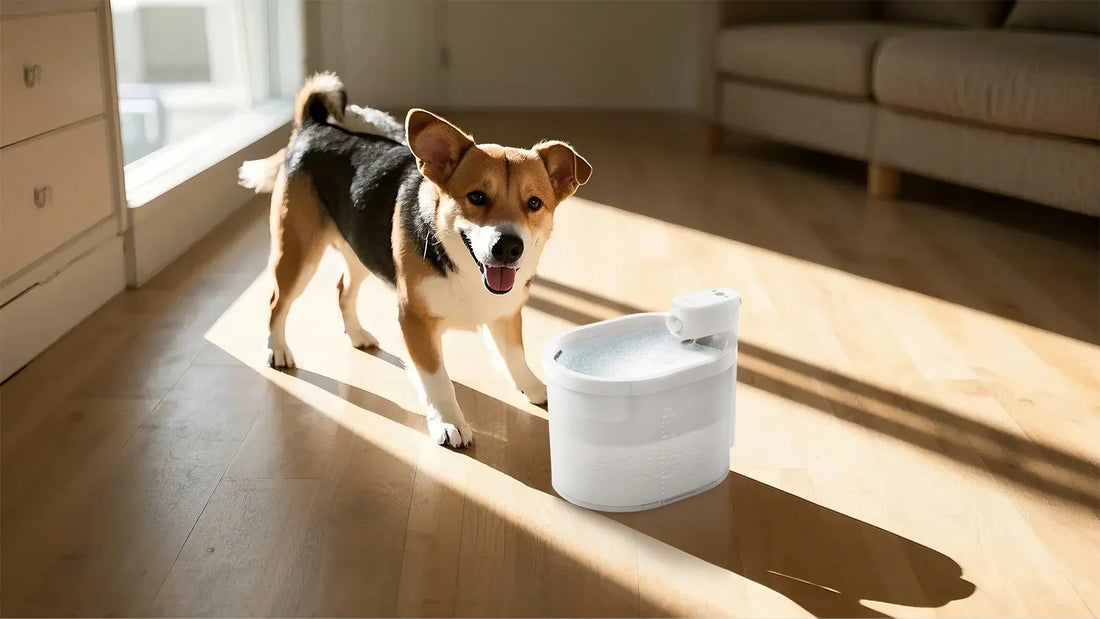If you've noticed that your dog is not drinking much water, it's natural to feel concerned. Water is essential for your pet's health, and a sudden decrease in water intake can be a sign of an underlying issue. This article explores the possible causes and offers actionable solutions to help your furry friend stay hydrated and healthy.
Understanding Your Dog's Water Needs
Dogs, like humans, require a consistent intake of water to maintain their bodily functions. The amount of water a dog needs depends on factors such as size, age, activity level, and diet. On average, a dog should drink about one ounce of water per pound of body weight each day. However, this can vary based on individual circumstances.
Common Reasons Why Your Dog Is Not Drinking Much Water
There are several reasons why your dog might be drinking less water than usual. Here are some of the most common causes:
1. Change in Diet
If you've recently switched your dog's food, this could affect their water intake. Wet food contains more moisture than dry kibble, so dogs eating wet food may drink less water. Conversely, a diet high in dry food might require more water consumption.
2. Environmental Factors
Weather and temperature play a significant role in your dog's hydration needs. During colder months, dogs may drink less water because they are less active and don't feel as thirsty. Similarly, if your dog spends most of their time indoors in a climate-controlled environment, they might not feel the need to drink as much.
3. Illness or Pain
A decrease in water intake can be a symptom of various health issues, including kidney disease, diabetes, or dental problems. If your dog is experiencing pain or discomfort, they might avoid drinking water altogether. It's essential to monitor their behavior and consult a veterinarian if you suspect an illness.
4. Stress or Anxiety
Dogs can experience stress or anxiety due to changes in their environment, routine, or social dynamics. This emotional state can lead to a reduced appetite and water intake. Identifying and addressing the source of stress can help restore their normal drinking habits.
5. Aging
As dogs age, their metabolism slows down, and they may become less active. This can result in a decreased need for water. However, it's crucial to ensure that older dogs remain adequately hydrated to support their overall health.
How to Encourage Your Dog to Drink More Water
If your dog is not drinking much water, there are several strategies you can try to encourage them to stay hydrated:
1. Provide Fresh Water Daily
Ensure that your dog always has access to clean, fresh water. Change the water in their bowl at least once a day to keep it appealing. Some dogs are sensitive to the taste of stale water, so this simple step can make a big difference.
2. Use a Water Fountain
Many dogs are attracted to moving water. Investing in a pet water fountain can encourage your dog to drink more, as the flowing water is often more enticing than still water in a bowl.
3. Add Flavor to the Water
If your dog is reluctant to drink plain water, try adding a small amount of low-sodium broth or a splash of their favorite juice to make it more appealing. Be cautious with the ingredients to avoid anything that could be harmful to your pet.
4. Offer Ice Cubes
Some dogs enjoy chewing on ice cubes, which can be a fun way to increase their water intake. You can also freeze low-sodium broth into ice cubes for an extra treat.
5. Monitor Their Activity Level
Encourage your dog to stay active through regular exercise. Physical activity can stimulate thirst and prompt them to drink more water. However, avoid overexertion, especially in hot weather, to prevent dehydration.
When to Seek Veterinary Help
While a temporary decrease in water intake may not be cause for alarm, there are situations where you should consult a veterinarian:
- Your dog has not drunk water for more than 24 hours.
- They show signs of dehydration, such as dry gums, lethargy, or sunken eyes.
- They exhibit other symptoms like vomiting, diarrhea, or loss of appetite.
- You suspect an underlying medical condition.
Early intervention can prevent complications and ensure your dog receives the care they need.
Preventing Dehydration in Dogs
Prevention is always better than cure. Here are some tips to help keep your dog hydrated:
- Always provide access to fresh water, especially during hot weather or after exercise.
- Monitor their water intake and adjust their diet if necessary.
- Be mindful of their health and seek veterinary advice if you notice any changes in their behavior or habits.
By taking these steps, you can help ensure that your dog remains healthy and hydrated.
If your dog is not drinking much water, it's essential to address the issue promptly. Understanding the potential causes and implementing practical solutions can make a significant difference in your pet's well-being. Remember, staying vigilant and proactive is the key to keeping your furry friend happy and hydrated.













